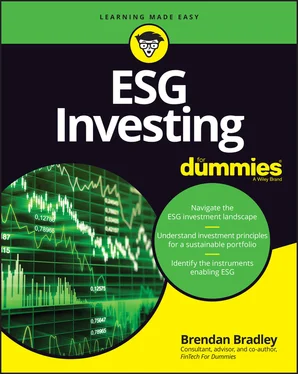 Whatever the approach, suppliers must be encouraged to share their sustainability challenges so that both sides generate better solutions together.
Whatever the approach, suppliers must be encouraged to share their sustainability challenges so that both sides generate better solutions together.
Defining “Green” for a Company
Reports suggest that from 2007 to 2009, eco-friendly product launches increased by more than 500 percent. More recent surveys have found that two-thirds of senior management see sustainability as a revenue driver, and half anticipate that green initiatives will present a competitive advantage. This striking change in the corporate mindset over the last ten years reflects a developing consciousness that environmental responsibility can contribute to growth and differentiation.
Supporters of green companies argue that it’s more efficient to go green than to continue adding toxic chemicals to the atmosphere and the environment overall. However, challengers dispute the environmental claims of some “green companies” as exaggerations and have raised allegations of greenwashing (see Chapter 6for further information), where a company is claiming to be green when its practice suggests it is not.
To appreciate the advantages of a green business, you need to understand what the term means. If a company makes a determined attempt to decrease its negative environmental impact, it can rightly claim to be “going green.” Typical measures include starting recycling and reusing procedural programs, as well as buying green products and services. Most countries have laws that order environmental compliance to varying degrees. For some companies, going green can indicate anticipating future regulation and getting ahead of the curve. The EPA launched an Action Agenda in 2020 with wide-ranging plans to decrease carbon emissions, promote sustainability, and provide enticements for being ahead of the “green curve.” (Go to www.epa.gov/sites/production/files/2016-07/documents/ej_2020_factsheet_6-22-16.pdf for details.)
In the following sections, I define what the term “green” means for a company: managing externalities and following the 3Rs (reduce, reuse, and recycle).
Internalizing (or managing) externalities
It will come as no surprise that, while generating wealth for investors, economic activity also creates externalities or impacts. The majority of externalities are negative! They also have associated costs that aren’t entirely covered by the entity that creates them. In particular, a negative externality assumes an indirect cost to the public that causes harm to people in the surrounding area; one example would be toxic gases that are released from chemical firms or mines. Rather than the company paying for the cleanup, the public or local government has to bear the indirect cost to clean up the problem.
Internalizing, or managing, the externality means shifting the burden from external to internal. This is generally achieved through taxes, which are levied when the externality reaches a certain point and a “penalty” is imposed, thereby discouraging these activities. Conversely, government can provide subsidies to stimulate activities that address the problem, such as limiting the effect of externalities on the community.
However, because regulators don’t always have full information on the externality, it’s difficult to impose the right penalty or subsidy. Moreover, historically, externalities have continued because of the lack of information needed to recognize them adequately. Therefore, as externalities become more transparent, they should be easier to internalize, creating the link between ESG factors and financial returns. Policy changes will require companies to reflect the cost of externalities in their business models. This generates a risk to future returns for investors, but is it acceptable for them to “turn a blind eye” to such activities? Investors are now aware of the potential cost of litigation for failing to protect their investments against environmental risk and have been placed in the spotlight for not building such risk considerations into their investment decision-making.
The 3Rs: Reduce, reuse, and recycle
The 3Rs that refer to the three basic skills taught in schools — reading, (w)riting and ’rithmetic — will be familiar to children and adults alike. However, the 3Rs of sustainable living — reduce, reuse, recycle — are probably more familiar to our children than adults as they are already better educated on the amount of waste we throw away!
With the cost of goods and materials rising, using resources efficiently and reducing business waste makes sense financially and for the environment. Moreover, the cost of sending waste to landfills is increasing, as are the restrictions on what can be sent. Increasingly, penalties are levied if waste isn’t handled appropriately or the right paperwork hasn’t been completed before it leaves your premises. Using the 3Rs also helps minimize the amount of space needed for landfill sites.
 Some index providers have launched indexes focused on companies that reduce, reuse, or recycle. One example of this is the Solactive ISS ESG Beyond Plastic Waste Index, which includes companies focused on plastic waste. Investment in such products is intended to alleviate the waste problems caused by production of plastics (for more information, visit
Some index providers have launched indexes focused on companies that reduce, reuse, or recycle. One example of this is the Solactive ISS ESG Beyond Plastic Waste Index, which includes companies focused on plastic waste. Investment in such products is intended to alleviate the waste problems caused by production of plastics (for more information, visit www.solactive.com/beyond-plastic-waste/ ).
Reduce the amount of waste you produce. Reducing waste in the first place is the preferred method of waste management, as you’re immediately protecting the environment. You can reduce waste by doing the following:
Purchasing durable, long-lasting goods
Seeking products and packaging that are toxic free
Redesigning products to use fewer raw materials in production, or to aid in recycling
In a world with so many disposable items, the idea of cleaning an item and using it again is alien to most people. When purchasing a new item, look for a product that can be used repeatedly rather than used once and thrown away, or buy or rent secondhand items. The items you reuse may end up being waste, but by reusing them, you’re reducing the overall amount of waste produced. Here are some examples of what you can do:
Refill bottles and reuse boxes.
Purchase refillable items and durable coffee mugs.
Use cloth napkins or towels.
Recycling prevents the emissions of many greenhouse gases and water pollutants, saves energy, and generates less solid waste. Also, when products are made using recovered rather than original materials, less energy is used during manufacturing, fewer pollutants are emitted, and pollution caused by the extraction and processing of original materials is reduced. In summary, recycling does the following:
Prevents emissions of many greenhouse gases and water pollutants
Saves energy and stimulates the development of greener technologies
Reduces the need for new landfills and incinerators
Detailing a Company’s Performance as a Steward of the Physical Environment
The term environmental stewardship has been used to describe activities such as reducing harmful activities or pollution, purchasing more sustainable products, and replanting trees and limiting harvests. Stewardship itself embodies the responsible planning and management of resources and can be applied to the environment and nature, economics, or property. Such actions can also be differentiated, from local to global efforts, or in rural and urban contexts. Many environmental issues are seen on a global scale, which suggests that local actions can’t meet those challenges; however, engaging in local stewardship actions and initiatives can be the catalyst to ensure involvement in promoting broader sustainability issues. Business initiatives that improve environmental impact are increasing in number, but there is a growing consensus that transformations need to take larger steps than those that are currently underway.
Читать дальше

 Whatever the approach, suppliers must be encouraged to share their sustainability challenges so that both sides generate better solutions together.
Whatever the approach, suppliers must be encouraged to share their sustainability challenges so that both sides generate better solutions together. Some index providers have launched indexes focused on companies that reduce, reuse, or recycle. One example of this is the Solactive ISS ESG Beyond Plastic Waste Index, which includes companies focused on plastic waste. Investment in such products is intended to alleviate the waste problems caused by production of plastics (for more information, visit
Some index providers have launched indexes focused on companies that reduce, reuse, or recycle. One example of this is the Solactive ISS ESG Beyond Plastic Waste Index, which includes companies focused on plastic waste. Investment in such products is intended to alleviate the waste problems caused by production of plastics (for more information, visit 










